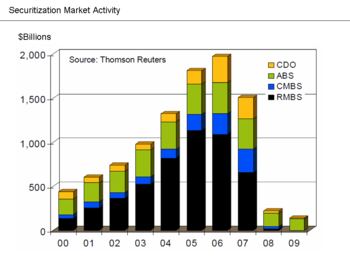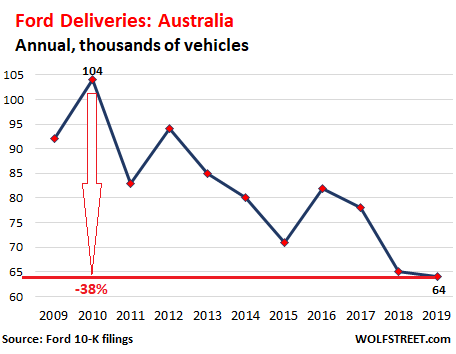
Demand drafts are sent when a bank account holder (a “drawer”) requests that a demand draft be sent from their bank (the “drawee”) to that of their recipient (the “payee”). Following this request, the bank, in turn, issues a demand draft to the payee who can then cash the demand draft at their own bank without needing to provide a signature. Because of the role that banks play in facilitating them, demand drafts are a very safe method of transferring money — even safer than money orders and most cheques.
What are the advantages of demand draft over cheque?
Advantages of a Demand Draft
Unlike a personal cheque, demand draft is guaranteed by the bank. It means that the payee gets the guarantee for funds. Demand Draft is a more convenient method for transferring huge amounts.
In general, demand drafts could make sense for you over a bank transfer if you plan on sending a large amount of money, e.g. perhaps for purchasing a home or another pricey asset. This is because demand drafts typically don’t have limits as bank transfers do, making them a preferred method for these types of purchases. The bank draft itself is a guarantee that the required funds will be accessible when the draft is drawn and issued. An issued bank draft cannot be revoked since it evidences an already completed transaction. However, if the buyer provides the appropriate paperwork, a stolen, lost, or destroyed draft can be replaced or canceled.
Contents: Cheque Vs Demand Draft
Banks typically charge a fee for issuing a demand draft, which may vary depending on the bank and the amount of the draft. Wire transfers usually also involve transaction fees, which can vary depending on the banks involved, the transfer amount, and whether it is a domestic or international transfer. For this purpose, various methods of payment are used, in which cheques and demand drafts are also included. • Bank drafts and certified cheques are both payment options and services that are offered by banks to their customers.
What is difference between DD and bankers cheque?
Banker's Cheque or Payment Order is a cheque issued for making the payments within the same city. Demand draft is a negotiable instrument used to transfer money from one person at one city to another person in another city.
Demand drafts differ from regular normal checks in that they do not require signatures to be cashed. So, both the instruments, cheque and demand drafts have their own uses and limitations. To deal with millions of transactions on a daily basis, one can avail the benefits of a cheque, which is easy and convenient to issue. Conversely, when the amount needs to be transferred from one place to the another or if it requires a guaranteed payment; demand draft is the best option to go for. Other common uses include return item fees, customer payments made remotely from the company, and transfer payments between different bank accounts.
Bearer Cheque:
Pay Order and Demand Draft are the instruments for which the value is already received by bank. However, a person can apply for revalidation of the Demand Draft by submitting the necessary application at the bank branch if the validity expires. Fill the Demand Draft with all the required details to avoid non-acceptance of the draft. BanksForYou is Free Clean and Minimal Informational Blog about the banks. It is suitable for the public like dealing with fewer relations with bank immediate action and the security measures to be performed. We basically cover every bank’s documents at most possible for us to share.
- You need to provide details such as your bank account information, the full name of the payee, and the address of the payee’s bank.
- An overdraft is a service where the customer can withdraw more cash than the available balance.
- It typically takes several business days for the demand draft to clear and for the funds to become available to the payee.
- You’ll usually pay a fee for this service, and it can depend on the amount of money sent as well as whether the drawee is with a different bank.
However, the maximum amount that may be covered by a single money order is $1,000, so larger amounts would require multiple money orders. A receipt with the serial order particulars is delivered when the transaction has been finalized. The buyer should maintain the receipt until they are certain that the money has been processed, as it may be difficult to trace the down payment without it. While making a Demand Draft, the Bank deducts the amount from the Bank Account of the individual who has requested for setting aside the Demand Draft and credits the same in their account.
Banker’s checks can be obtained at nominal fees.
Diffzy is a one-stop platform for finding differences between similar terms, quantities, services, products, technologies, and objects in one place. Our platform features differences and comparisons, which are well-researched, unbiased, and free to access. It is not mandatory that you should have a Bank Account in the Bank from where you are preparing the Demand Draft. The Demand Draft can be made by paying the Bank in Cash as well, but for Demand Drafts exceeding Rs. 50,000 the payment should be through a cheque only.
However, consider the DD validity, cancellation rules, and other factors before as a payee. A demand draft is a negotiable instrument to transfer funds from difference between demand draft and cheque one bank to another. Unlike a cheque, an individual needs to request his/her bank to issue a demand draft in the recipient’s name to transfer the amount.
Demand Draft vs. Wire Transfer
If you are the payee, when your bank receives a DD, the payment will be made only to your bank account. You can consider using demand drafts for paying large sums of money, as it is much more convenient than paying via cash or cheque. A major benefit is that you can use them for cross-border transactions.

He has the entitlement over the bank account on which the cheque is being issued. Many organizations, especially government organizations, use demand drafts to make payments to their employees and pensioners. Dishonour of a cheque due to insufficient funds in the issuer’s account is regarded as a criminal offence. A ‘Cheque Return Memo‘ is issued by the drawee bank to the payee bank, signifying the cause for non-clearance of the cheque, which the payee’s bank gives to the payee along with the bounced cheque.
It is not mandatory that one should have a bank account in the bank from where he is preparing the demand draft. The validity period has been reduced to prevent anyone from misusing these instruments and circulating them in the market. According to RBI’s mandate, no financial institution can proceed with the necessary payments if anyone comes to them with a DD which is expired by 3 months. The contents of this article/infographic/picture/video are meant solely for information purposes. The contents are generic in nature and for informational purposes only. It is not a substitute for specific advice in your own circumstances.
- Ii) Demand draft cannot be canceled as it is pre-paid before giving to the other party.
- Banks are playing the most significant role in today’s modern world from money transactions to transfer of money to different parts of the world.
- Many financial institutions use cheques as a mode of repayment for loans, especially in cases where the loan amount is high.
- Demand draft is issued by a bank and is drawn by one branch of a bank on another branch of the same bank.
- Demand drafts are commonly used for secure transactions such as large amounts, educational fees, property purchases, or settling financial obligations.
This is the case where substantiation and secure delivery of payment is of high importance. Though wire transfers may also be used in this case, wire transfers are a more versatile form of payment that includes regular daily transactions of lower importance. The processing time for a demand draft may vary depending on factors such as the issuing bank and delivery method. Often completing within hours or minutes, this allows for swift transfer of funds.
Can a demand draft bounce?
In case of cheques, an individual is the drawer and hence the cheque can be dishonoured by the drawee bank due to various reasons, like insufficient funds. However, in case of DD, the drawer is a bank and hence the payment is certain and the instrument cannot be dishonoured.